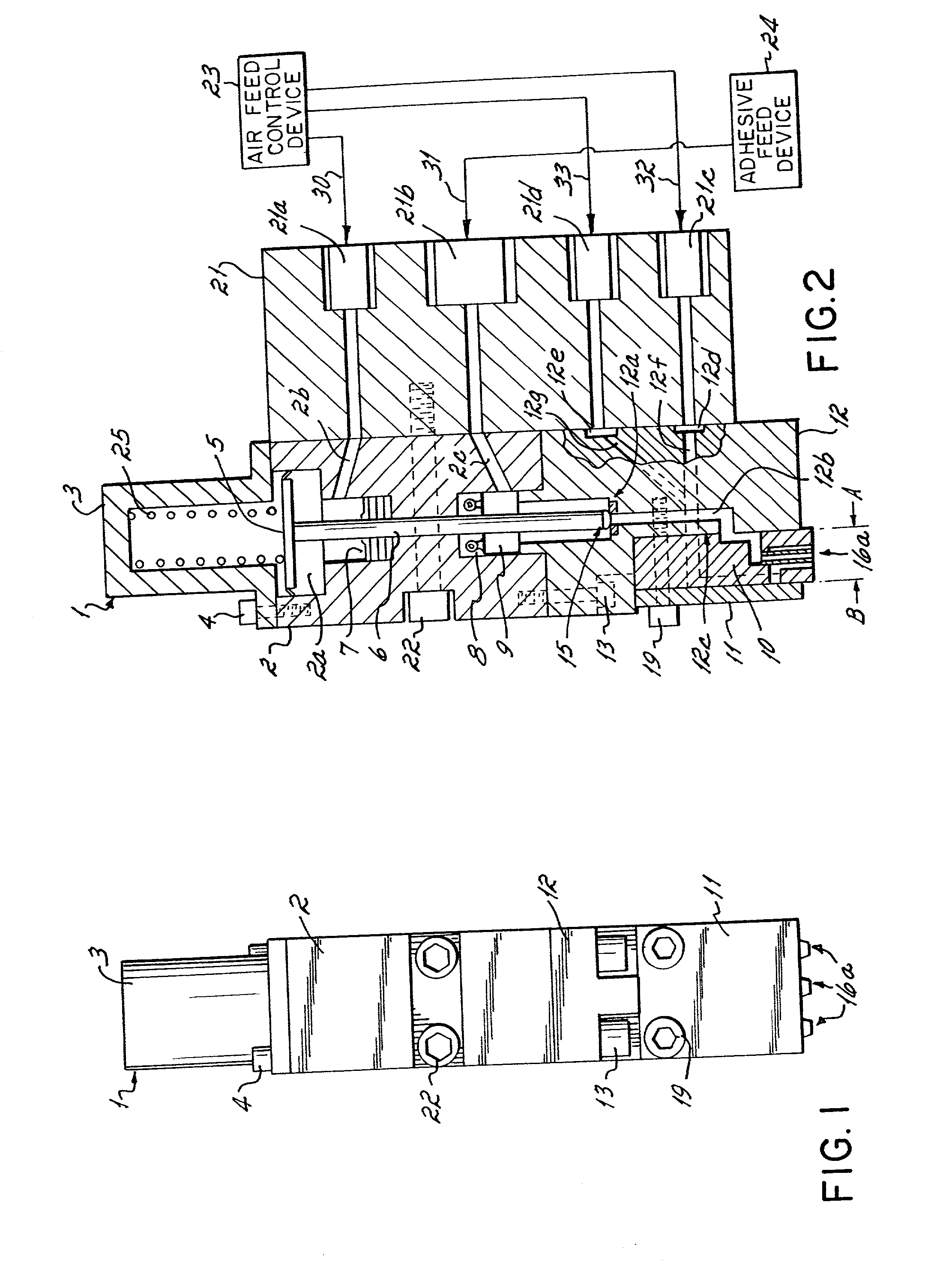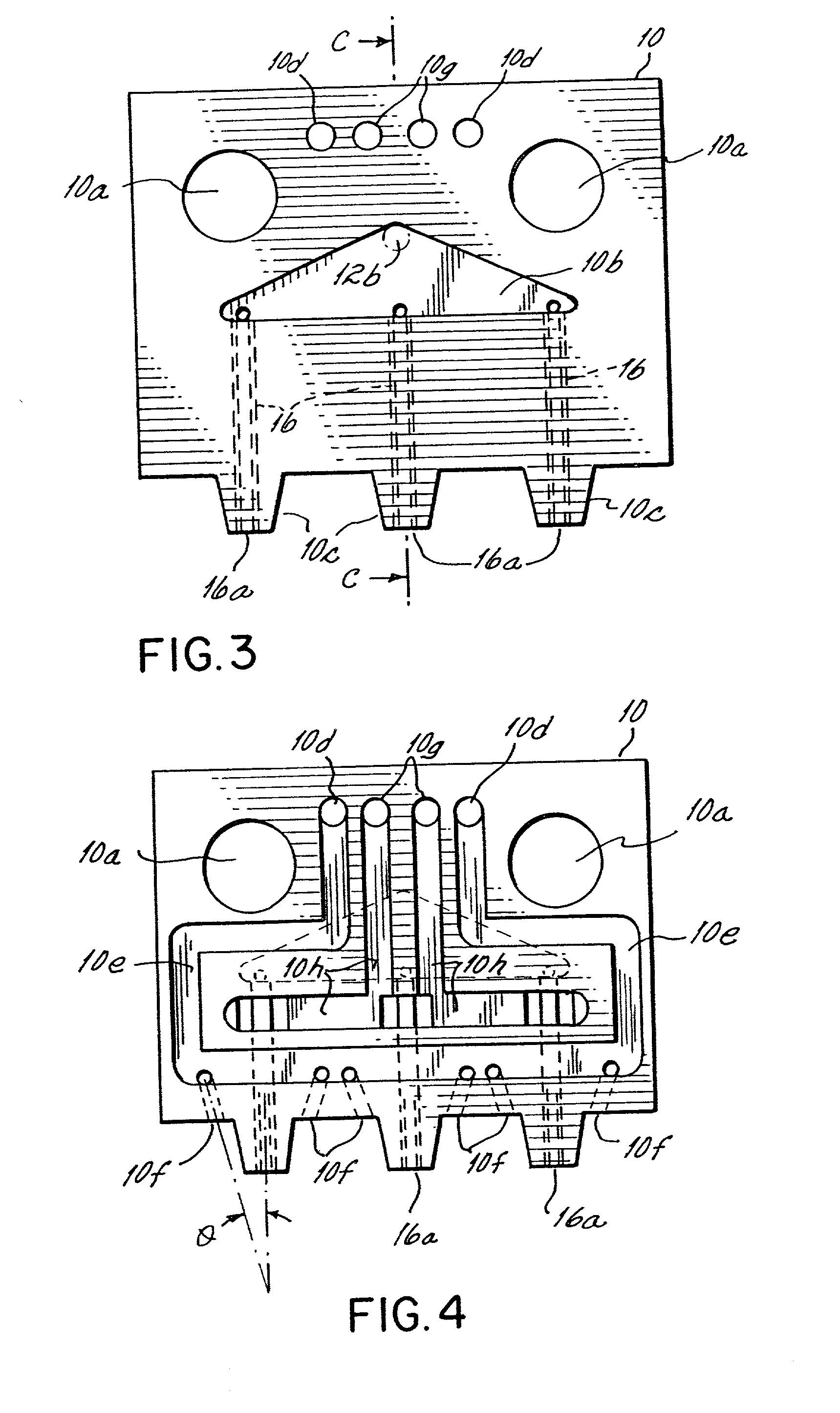Device and method for applying adhesive filaments to materials such as strands or flat substrates
a technology of adhesive filaments and strands, applied in liquid surface applicators, coatings, absorbent pads, etc., can solve the problems of troublesome operation, strand material can be severed, and the adhesive coating device is known, and achieves uniform back and forth or vacillating adhesive pattern, good all-around adhesive attachment
- Summary
- Abstract
- Description
- Claims
- Application Information
AI Technical Summary
Benefits of technology
Problems solved by technology
Method used
Image
Examples
Embodiment Construction
[0061] Many tests of applying an adhesive to a strand material were repeated under the following conditions, and good results were obtained in all the tests. The conditions were as follows:
[0062] (1) strand material used as the substrate: strand elastic, thickness 560 denier (diameter about 0.28 mm), traveling speed 150-170 m / minute.
[0063] (2) Type of adhesive used: product No. H-6830 from Nitta Findley Co., Ltd. and product No. HE-1 from Japan N. S. C. Co., Ltd., both being rubber-based hot-melt adhesives.
[0064] (3) Melting temperature of adhesive upon heating: 150.degree. C. for H-6830 and 160.degree. C. for HE-1.
[0065] (4) Distance from the leading end of the adhesive discharge nozzle to the workpiece: 5-20 mm.
[0066] (5) Diameter of the adhesive discharge nozzle: 0.6 mm.
[0067] (6) Discharge pressure of the adhesive: 7-14 kg / cm.sup.2.
[0068] (7) Diameter of pattern air jet nozzle: two diameters, 0.46 mm and 0.50 mm.
[0069] (8) Pressure of pattern air: 0.3-1.0 kg / cm.sup.2.
[0070] (9) ...
PUM
 Login to View More
Login to View More Abstract
Description
Claims
Application Information
 Login to View More
Login to View More - R&D Engineer
- R&D Manager
- IP Professional
- Industry Leading Data Capabilities
- Powerful AI technology
- Patent DNA Extraction
Browse by: Latest US Patents, China's latest patents, Technical Efficacy Thesaurus, Application Domain, Technology Topic, Popular Technical Reports.
© 2024 PatSnap. All rights reserved.Legal|Privacy policy|Modern Slavery Act Transparency Statement|Sitemap|About US| Contact US: help@patsnap.com










